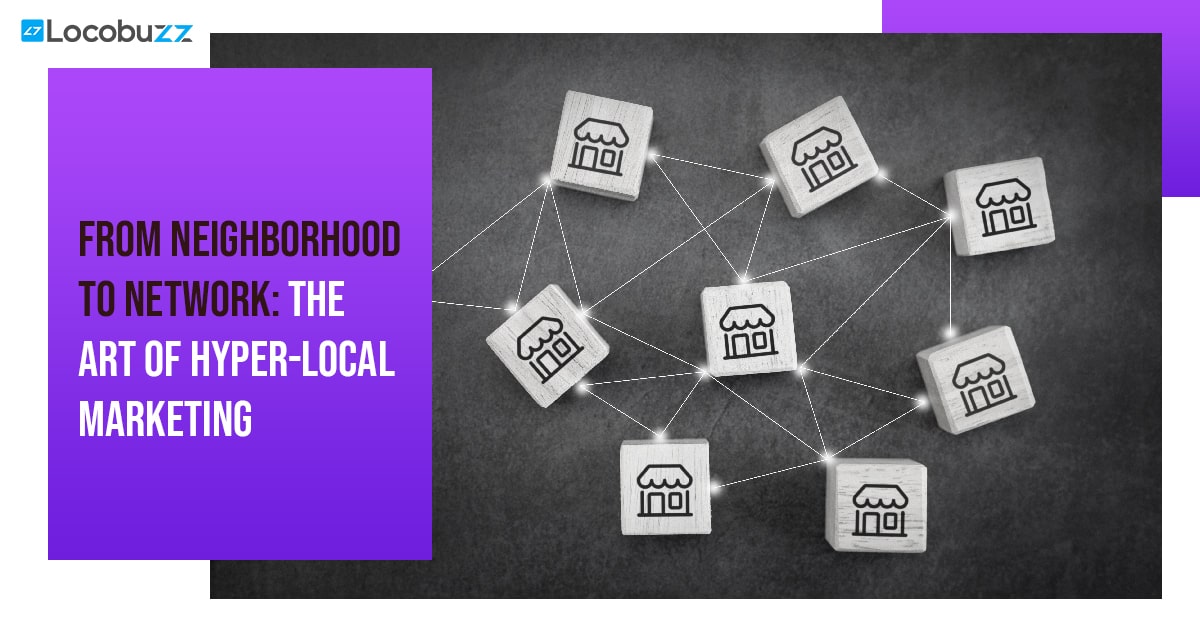Consumer Empathy: The most effective way to create a Personalized Customer Experience
 In today’s highly competitive market, customer experience (CX) has become one of the most critical aspects of any successful business. The ability to understand and connect with customers on a deeper level is a crucial factor in building long-lasting relationships and driving customer loyalty. This is where customer empathy comes into play.
In today’s highly competitive market, customer experience (CX) has become one of the most critical aspects of any successful business. The ability to understand and connect with customers on a deeper level is a crucial factor in building long-lasting relationships and driving customer loyalty. This is where customer empathy comes into play.
Table of Contents
What is Customer Empathy?
Customer empathy is the ability to understand and share the feelings, thoughts, and experiences of your customers. It means putting yourself in your customers’ shoes and seeing the world from their perspective.
Customer empathy is a mindset that requires businesses to put themselves in their customers’ shoes and view the world from their perspective. It’s about understanding and acknowledging customers’ emotions, thoughts, and experiences and using that understanding to create a more personalized and effective customer experience.
To practice customer empathy, businesses need to actively listen to their customers and respond to their needs and concerns with care and compassion. This means understanding the customer’s problem, acknowledging their frustration or pain, and making a genuine effort to help them find a solution.
Customer empathy is not just about being nice to customers; it’s a crucial aspect of building lasting relationships and driving customer loyalty. When businesses show empathy to their customers, it builds trust and creates an emotional connection that leads to increased customer satisfaction and loyalty.
In today’s digital age, customer empathy is more critical than ever. With the rise of social media and online reviews, customers have more power and influence than ever before. This means that businesses need to be more proactive in understanding and addressing their customers’ needs and concerns to stay competitive in the market.
Ultimately, customer empathy is about treating customers as human beings with unique needs and expectations, rather than just another transaction. By putting customers at the center of their business strategy and creating a culture of empathy and compassion, businesses can create a more meaningful and successful customer experience.
Why Empathy is Important in Customer Experience
Empathy is a crucial component of customer experience because it helps you understand your customers’ needs, expectations, and pain points. When you empathize with your customers, you can create a personalized experience that addresses their specific concerns and makes them feel valued.
Builds trust and loyalty: When customers feel heard and understood, it builds trust and creates an emotional connection that leads to increased customer loyalty. Empathy helps businesses create a more personalized experience that meets the unique needs of each customer, which ultimately leads to more satisfied and loyal customers.
Drives customer satisfaction: By understanding and addressing customers’ needs and concerns, businesses can create a more satisfying customer experience. When customers feel like they are being heard and that their problems are being addressed, they are more likely to be satisfied with their overall experience.
Helps you stand out from the competition: In today’s competitive market, businesses need to differentiate themselves to succeed. By showing empathy to customers and creating a personalized experience, businesses can stand out from the competition and create a competitive advantage.
Reduces customer churn: When customers feel like they are being heard and their problems are being addressed, they are less likely to switch to a competitor. By creating a culture of empathy and understanding, businesses can reduce customer churn and increase customer retention.
Improves customer lifetime value: When customers are satisfied and loyal, they are more likely to return to the business and make repeat purchases. By creating a personalized experience that meets their unique needs and expectations, businesses can increase customer lifetime value and ultimately drive revenue growth.
Empathy is critical to creating a successful customer experience because it helps businesses understand and address their customers’ needs and concerns. By creating a personalized experience that meets the unique needs of each customer, businesses can build trust, drive satisfaction and loyalty, reduce churn, and increase revenue growth.
Why Customer Empathy Matters to Your Organization
How to Build Customer Empathy
Building customer empathy requires a concerted effort from all levels of your organization. Here are some steps you can take to build customer empathy:
Listen to your customers: Active listening is the first step in building customer empathy. To effectively listen to your customers, you need to create channels for feedback, such as surveys, social media, or customer service. Make sure to respond promptly and in a caring and compassionate manner to show that you value their feedback. Additionally, look for patterns in customer feedback to identify common issues that need to be addressed.
Train your employees:
Building customer empathy requires that all employees understand the importance of listening to customers and responding with empathy. Train your employees on active listening skills, effective communication, and how to respond to customer concerns. Additionally, empower your employees to make decisions that can improve the customer experience, such as offering a refund or providing additional assistance.
Use data and analytics:
Data and analytics can help you understand your customers’ behavior, preferences, and pain points. This information can be used to personalize their experience and create targeted marketing campaigns. Use tools such as customer journey mapping and customer satisfaction surveys to better understand your customers’ needs and how to improve their experience.
Create a customer-centric culture:
Building customer empathy requires a shift in organizational culture. Leaders need to prioritize the customer experience and make it a central part of the company’s values and mission. Encourage employees to share customer feedback, reward good customer service, and make customer satisfaction a key performance indicator.
Personalize the customer experience:
Personalization is a crucial aspect of building customer empathy. Use the data and feedback you’ve gathered to create personalized experiences that address customers’ unique needs and preferences. This can include personalized marketing campaigns, tailored product recommendations, or customized service offerings.
Building customer empathy requires a concerted effort from all levels of the organization. By actively listening to customers, training employees, using data and analytics, creating a customer-centric culture, and personalizing the customer experience, businesses can build lasting relationships with their customers and drive customer loyalty.
Tips for Building Customer Empathy
Here are some tips for building customer empathy:
- Practice active listening: Listen attentively to your customers’ concerns and avoid interrupting or dismissing them.
- Use empathetic language: Use language that shows you understand and care about your customers’ concerns.
- Ask questions: Ask your customers questions to gain a deeper understanding of their needs and expectations.
Why Empathy for Customers is the Secret to Customer Success
Values That Customer Empathy Will Add to Business
Customer empathy adds several values to businesses, including:
Increased customer loyalty: When you show empathy to your customers, you build trust and loyalty, which leads to increased customer retention.
Improved customer satisfaction: Empathizing with your customers helps you create a personalized experience that meets their unique needs and expectations, leading to higher customer satisfaction.
Competitive advantage: Customer empathy can differentiate your brand from competitors and create a unique value proposition that resonates with your target audience.
What Do You Measure in Customer Empathy?
Measuring customer empathy requires a combination of qualitative and quantitative methods. Here are some key metrics that can be used to measure customer empathy:
Customer satisfaction: Customer satisfaction is a crucial metric for measuring customer empathy. By surveying customers about their experience, you can gauge their satisfaction with the service they received and identify areas for improvement.
Net promoter score (NPS): NPS is a metric used to measure customer loyalty and satisfaction. It asks customers how likely they are to recommend your product or service to others on a scale from 0 to 10. Customers who score 9 or 10 are considered promoters, while those who score 6 or below are considered detractors. By calculating your NPS score, you can gauge the level of customer empathy and satisfaction.
Customer effort score (CES): CES measures the level of effort a customer had to put in to complete a transaction or resolve an issue. By measuring the customer effort score, you can identify areas where the customer experience can be improved.
Customer retention rate: Customer retention rate measures the percentage of customers who continue to do business with your company over time. A high retention rate is an indicator of customer satisfaction and loyalty.
Customer feedback: Collecting feedback from customers through surveys, feedback forms, or social media can provide valuable insights into their experience. Analyzing this feedback can help you identify areas where the customer experience can be improved.
Complaint resolution time: The time it takes to resolve a customer complaint is an important metric for measuring customer empathy. By resolving complaints quickly and effectively, you can show customers that their concerns are being heard and addressed.
Measuring customer empathy requires a combination of quantitative and qualitative methods. By tracking metrics such as customer satisfaction, NPS, CES, customer retention rate, customer feedback, and complaint resolution time, businesses can identify areas for improvement and demonstrate their commitment to creating a positive customer experience.
Overcoming Barriers to Building Customer Empathy
Building customer empathy can be challenging, and there are several common barriers that businesses may face. Here are some of the most significant barriers to building customer empathy and how to overcome them:
Organizational Silos: One of the biggest barriers to building customer empathy is organizational silos. When different departments or teams within a business work independently, it can be challenging to create a cohesive customer experience that shows empathy towards customers. To overcome this, businesses should encourage cross-functional collaboration and communication. This can include regular meetings or workshops where different departments can share information and insights, as well as creating a culture that values collaboration and teamwork.
Limited Resources: Building customer empathy requires resources, including time, money, and personnel. For small businesses or those with limited budgets, it can be challenging to invest in customer empathy initiatives. To overcome this, businesses can prioritize their efforts by focusing on the most critical touchpoints in the customer journey or by using technology to automate some aspects of customer experience management.
Lack of Customer Insight: Building customer empathy requires understanding your customers’ needs, preferences, and pain points. Without this insight, it can be challenging to create a personalized experience that shows empathy towards customers. To overcome this, businesses can use tools such as customer surveys, social listening, and customer journey mapping to gather insights about their customers. This data can then be used to inform customer experience strategies and personalize interactions with customers.
Lack of Awareness or Buy-in: Building customer empathy requires buy-in from all levels of the organization, from senior leaders to frontline employees. Without this buy-in, it can be challenging to create a culture of empathy that permeates the entire organization. To overcome this, businesses should educate employees about the importance of customer empathy and how it relates to the overall success of the business. This can include training programs, regular communication about customer experience goals, and incentivizing employees who demonstrate empathy towards customers.
To overcome the barriers to building customer empathy, businesses must encourage cross-functional collaboration, prioritize their efforts, gather customer insight, and create a culture of empathy through education and buy-in from all levels of the organization.
How Locobuzz Unified Platform will help in Measuring Customer Empathy
Locobuzz is a customer experience management platform that can help businesses measure customer empathy in several ways:
Sentiment Analysis: Locobuzz uses advanced sentiment analysis algorithms to analyze customer feedback from various sources such as social media, review sites, and customer support channels. This analysis helps businesses understand the emotional state of their customers, including their concerns, frustrations, and pain points. By analyzing sentiment, businesses can identify areas where they need to improve their customer experience and show empathy towards their customers.
Customer Journey Mapping: Locobuzz enables businesses to map the customer journey from start to finish. This helps businesses understand how customers interact with their brand at every touchpoint, including pre-purchase, purchase, and post-purchase. By mapping the customer journey, businesses can identify areas where customers are experiencing pain points and take steps to improve their experience.
Automated Response Management: Locobuzz has an AI-powered automated response management system that can help businesses respond to customer queries and complaints quickly and effectively. By responding promptly and providing solutions to customer issues, businesses can show empathy towards their customers and improve their experience.
Customer Feedback Management: Locobuzz provides businesses with tools to manage customer feedback effectively. This includes surveys, feedback forms, and social listening tools. By collecting feedback from customers and analyzing it, businesses can identify areas where they need to improve their customer experience and show empathy towards their customers.
Locobuzz helps businesses measure customer empathy by providing advanced sentiment analysis, customer journey mapping, automated response management, and customer feedback management tools. These tools enable businesses to understand their customers’ needs and concerns and take steps to improve their experience.
Final Thoughts
n today’s competitive business landscape, building customer empathy is essential for creating a personalized, positive customer experience that leads to customer loyalty and business success. By understanding your customers’ needs, preferences, and pain points, you can create a customer-centric culture that values empathy and uses it to drive business growth.
Overcoming barriers to building customer empathy requires a concerted effort from all levels of the organization, including cross-functional collaboration, prioritizing resources, gathering customer insights, and creating a culture of empathy through education and buy-in.
If you’re looking to build customer empathy in your organization, start by listening actively to your customers’ feedback and concerns, training your employees to show empathy, and using data and analytics to personalize the customer experience.
Consider investing in customer experience management tools like Locobuzz Unified Platform to measure customer sentiment and track the impact of your empathy-building efforts. Remember that building customer empathy is an ongoing process that requires continuous improvement and a commitment to putting your customers first.






















